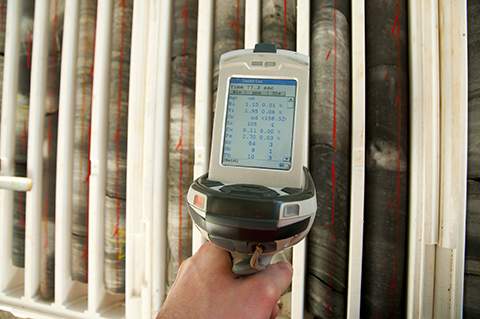Updated September 2024
Did you know that homes and buildings built before 1978 may very well contain lead-based paint? And, as you know, because of that, they can provide significant health risks, particularly to kids and pregnant women. Making sure these dangerous paints are detected is critical. One of the most efficient ways to find lead paint is through testing called XRF (X-ray fluorescence) testing. In this article, we will provide information as to why XRF testing matters, how it works, and why it’s vital for the safety of people when in older buildings.
What is XRF Testing and How Does It Work?
XRF testing is a method that uses a handheld device that sends out X-rays to analyze the paint on surfaces. Those X-rays go through the paint layers and tell us if there’s any lead. It’s fast, real-time, and best of all—doesn’t destroy the property. Unlike old-school methods where chunks of paint had to be chipped off and sent to a lab, XRF does the job without leaving any mess behind.
According to Ed Karl, founder of Karl Environmental Group, “XRF testing has changed how we do lead inspections. It lets us check a building thoroughly without tearing anything apart, which is especially useful in places like schools and homes.”
Why Lead Paint Detection is So Important
Lead poisoning, especially in children, can cause a wide range of health issues, from developmental delays to serious neurological problems. If you’re pregnant and exposed to lead, it can even affect the unborn child. For buildings built before 1978, lead paint is a real concern that property owners need to be aware of.
Advantages of XRF Testing
When it comes to checking for lead paint, XRF is by far the best choice for a few reasons:
- No Damage: You don’t need to remove paint or disturb surfaces. Unlike methods that scrape away layers, XRF keeps everything intact.
- Instant Results: You see the results, right there on the spot. No waiting for any reports to come back with the answers.
- Works Through Layers: XRF can detect lead even if it’s buried under multiple layers of paint, which is common in older buildings.
- Saves Money: Because it’s fast and doesn’t need lab analysis, XRF testing can save property owners time and money.
As Ed shares, “With XRF testing, we can quickly figure out problem areas and help property owners deal with them as soon as possible without having to wait.”
How Karl Environmental Helps
At Karl Environmental Group, we’re proud to offer expert XRF lead testing services. Our team is trained and certified to use the latest XRF technology to find lead-based paint in residential and commercial properties. Our mission is to help keep you safe and ensure that buildings meet all the necessary safety standards.
“We don’t just stop at detecting lead results,” Ed says. “We help guide property owners on what they should do next, whether it’s removal or remediation. Our main goal is keeping you safe.”
After we finish testing, we provide a detailed report, showing exactly where lead is found and what should be done to remove or manage it safely.
FAQs About XRF Testing
- Is XRF testing a reliable way to detect lead paint? Yes! XRF testing is incredibly reliable. It delivers real-time results that are accurate, even in older buildings with complex paint histories. Ed adds, “XRF lets us find even the smallest traces of lead.”
- How does XRF compare to other lead paint testing methods?
It’s faster, noninvasive, and usually more affordable. Traditional methods like paint chip sampling require more time, and they can cause surface damage. - Where is XRF testing usually used?
We use it in homes, schools, commercial properties, and even industrial buildings to check for lead-based paint.
What Happens During an XRF Inspection?
If you’ve never had an XRF inspection before, here’s how it works:
- Consultation: We’ll evaluate the property, especially focusing on areas with higher risks for lead.
- Testing: We’ll scan the painted surfaces using our handheld XRF device. The X-rays will pass through the paint layers, checking for lead.
- Results: You’ll get immediate feedback, plus a detailed report that highlights where lead was detected and what you should do next.
Protect Your Property from Lead Hazards
Whether you own a home, manage a commercial building, or oversee a school, making sure your building is lead-free is vital to everyone. Karl Environmental Group offers thorough XRF lead paint testing services to help you find any lead hazards and take the next steps toward fixing the problem. If you’re looking for the best lead testing services in your area, we’re here to help.
“Lead detection is serious business,” says Ed. “Catching it early can save you from problems later on, including health risks and expensive repairs.”
Don’t wait—With XRF testing, we can provide you with a reliable, efficient, and nondestructive solution. Our services are a top choice for addressing your lead paint challenges. To check out all the lead services we offer, visit our Lead Sampling and Remediation page.
If ready for your testing, contact us today to schedule your XRF lead paint inspection and make sure your property is safe.

